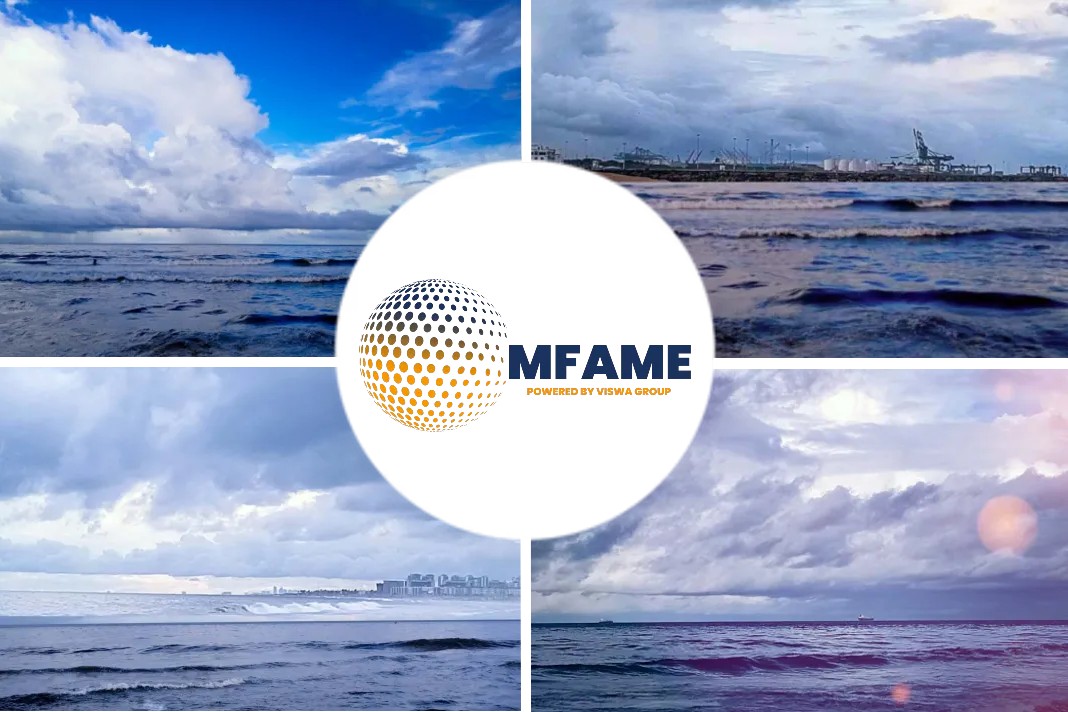- GTT, Alwena Shipping and COSCO Shipping Zhoushan have proposed a solution that combines an LNG retrofit and jumboisation.
- The companies unveiled the solution at Riviera Maritime Media’s The case for LNG retrofit and jumboisation of container vessels webinar, sponsored by GTT.
A recent news article published in the Riviera states that Trio of companies unveil LNG retrofit and jumboisation concept for box ships.
Approval in principle by Bureau Veritas
Gaztransport & Technigaz (Commercial Division) business development manager Jean-Benoît Bensoussan, Alwena Shipping project manager Thibault Vinet, and COSCO Shipping Heavy Industry (Zhoushan) project manager, commercial department Bai Fuqing made up the panel and talked through the concept being applied to a 14,000-TEU container ship.
The principle, which gained an approval in principle by Bureau Veritas in January this year, allows the vessel to be compliant until 2045.
Mr Bensoussan said, “It allows shipowners to meet IMO requirements and extends the lifespan of assets, allowing them to operate the vessel longer with opex savings while generating additional revenue.”
Explaining the background he said, “There is talk about retrofits for bulkers and tankers where it is easy to fit the LNG tank to the deck, but container vessels have an over-crowded deck which means this is not possible, so they need to find compact solutions for LNG containment systems. This is where GTT’s membrane technology makes complete sense.”
The solution is aimed at container ships
The solution comes on the back of the Hapag Lloyd LNG retrofit; it was decided to revisit the business case and improve it by combining LNG with a cargo capacity increase to reduce the payback time of the full retrofit. A new section is inserted towards the aft of the vessel composed of LNG tanks and a cargo deck to load additional containers.
The solution is aimed at container ships of 9,000-11,000 TEU and 11,000-14,000 TEU, that are less than 10 years old.
Mr Bensoussan said, “What makes LNG the perfect choice is it is available along the main shipping routes. BioLNG is developing, and some are mixing LNG and bioLNG for their vessels. When green hydrogen is available, bioLNG and synthetic LNG can be used interchangeably with the existing bunkering LNG infrastructure.”
The retrofit consists of adding a section of 29 m; giving additional cargo capacity of 1,148 TEU; a dead weight increase of 16,000 tonnes; with an LNG tank capacity of 12,230 m3; Mark III (270mm) membrane technology; design daily BOR of 0.255%V/day; design BOG flow rate of 542 kg/h (CH4).
There will be enough LNG in GTT’s membrane tank to last a round trip on the Europe-Asia route.
Mr Fuqing expanded what the work in the yard would involve. He said COSCO has “great experience in vessel repair and conversion”, and indeed “jumboisation is known to our shipyard”, as it jumboised four vessels in 2018-2019.
Vessel candidate selection to vessel delivery is 24 months
He explained the overall retrofit project from vessel candidate selection to vessel delivery is 24 months, including the allocation of 10 months for the new block construction with the fuel gas handling system and GTT tank outfitting, and 126 days for the vessel to be immobilised in the shipyard, with 42 days for drydock. This period also includes all approvals, engineering, assessment, conversation and main operation.
The overall capex for the conversion is US$41M, with the joint presentation explaining this is driven by the fabrication of the additional section, with the LNG modification depending on the engine retrofit and FGHS maker selection.
The opex savings come to US$1.4M per year for a vessel running on LNG (the presentation details an operational profile to assume these savings). As well as fuel savings of US$1.4M, there is additional annual revenue of US$6M.
The savings break down to an estimated opex per day of around US$16,000 and the payback after retrofit is in less than seven years.
Mr Vinet summed up, “The regulation is there, there is no turning back so shipowners need to act, they will have to find alternative solutions. Conversion to LNG is a proven solution that allows them to comply with current and future regulations. And jumboisation will provide an added revenue stream and improve payback in operation.”
Did you subscribe to our daily Newsletter?
It’s Free! Click here to Subscribe
Source: Riviera






















